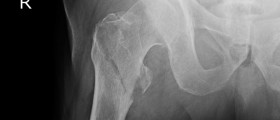
The elbow joint comprises three bones, the humerus (a single bone of the upper arm), the radius and the ulna (bones of the forearm). Apart from bony components the joint is also made of ligaments, muscles and tendons which maintain joint stability and allow its movements.
Elbow injuries, including fractures, are quite frequent among children and adults. If they occur, a person requires prompt evaluation and adequate treatment. As it is the case with any other injury, elbow injuries and fractures may cause certain complications and can be responsible for permanent disability.
Elbow fracture affects one or more of the three bones. Apart from affecting bones, fracture can lead to additional damage of the nearby tissues and cause serious problems.
How does Elbow Fracture Occur?
There are different ways to fracture the elbow. In many cases this fracture develops due to overuse or an acute traumatic event. It is common among athletes. An individual may, for instance, fracture the elbow if he/she falls backward off a snowboard. In such case the person tends to brace the fall with his/her arm outstretched and hand open but this particular position actually is most convenient for this type of fracture.
Furthermore, elbow fracture may affect casualties in an automobile and motorcycle collisions. The fracture is also possible in case of direct blow to the elbow.
Treatment for Broken Elbow
One should seek medical attention in case there is a chance he/ she has suffered an elbow fracture. If the wound is open, it is supposed to be covered with a clean bandage. The elbow must be immobilized. Immobilization prevents further damage to the nearby soft tissues. Bleeding is stopped with firm pressure onto the bleeding spot and elevation of the extremity. Swelling can be reduced with ice packs. A person should be transferred to the nearest hospital. Finally, one is advised never to try straightening of the broken bone. He/she should also refrain from any kind of manipulation in the injured area.
Medical treatment is different and depends on the severity and extent of the injury. Not so severe injuries are treated with splints, elevation, pain relieving medications and ice packs. Fractured bones, however, may need to be fixed surgically. Sometimes surgeons perform surgery because there is serious damage to soft tissues (blood vessel and nerve damage). Special attention is given to open fractures. They are more complex and can cause additional complications.
It is not a custom to apply a cast to freshly injured elbows because swelling under the cast may lead to even more damage to soft tissues. Splints are a better option when it comes to elbow immobilization.
And finally, after the healing is complete, patients are supposed to engage in physical therapy in order to restore all the movements of the previously injured elbow and strengthen arm muscles.

















Your thoughts on this
Loading...